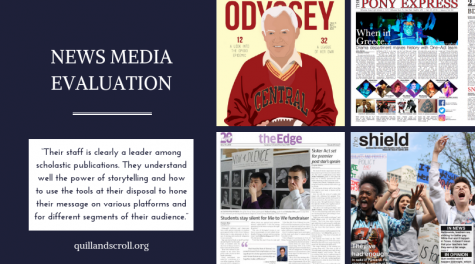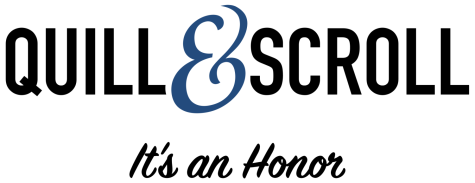Weekly Scroll for February 8, 2019
News, tips and advice from the Quill and Scroll International Honor Society
Compiled and written by Quill and Scroll journalist Nichole Shaw
jjj
The Lede
New York Times obtains sustainable digital publishing model

Markus Spiske, Unsplash
The New York Times announced it’s fourth-quarter and full-year financial results for 2018 on Wednesday. What to take away: digital publishing for the Times is set to continue making profits that can pay for their newsroom with ease. Digital revenue of the Times in 2018 came out to $709 million, securing the likelihood to reach their 2015 goal of $800 million in digital revenue by 2020. Their profits suggest that their is hope for a publishing company to move their business into a majority-business model that will financially support the costs of a newsroom, Nieman Journalism Lab Director Joshua Benton said.
“A common goal in newspaper circles a few years ago was to someday be able to make enough money in digital to cover the cost of the newsroom,” Benton said. “Well, at this point, the Times could pay for the newsroom two times over with just digital money. Which is probably why that newsroom keeps growing — the Times reported it now employs 1,600 journalists, an all-time high.”
This growth of a recognizable sustainable digital business model from Times comes after the recent lay-offs of at least 2,100 media workers in the past three weeks, with BuzzFeed leading in cutting 15 percent of their staff. 40 percent of the revenue the Times made in 2018 was digital, and it’s still growing. In an age where the internet and social media influence the spending of consumers, the Times has a bright future in obtaining a sustainable digital business model that can support a growing newsroom.
The New York Times shows there is still hope in the journalism industry despite job lay-offs in smaller local businesses and some larger-scale digital publishing companies. With the right model and audience engagement, journalism is not a dying industry.
Student journalists testified for New Voices Act to restore press rights

Credit goes to Sam McGhee who shot this at Freeman High School in Rockford, Washington.
On Wednesday, student journalists gathered before the Missouri House of Representatives to give a testimony pushing for the passing of the New Voices Act. The Walter Cronkite New Voices Act is a legislative bill aimed to protect student journalists from being censored by their respected schools. The New Voices Campaign mission statement reads as follows:
“New Voices is a student-powered grassroots movement to give young people the legally protected right to gather information and share ideas about issues of public concern,” according to their website. “We work with advocates in law, education, journalism and civics to make schools and colleges more welcoming places for student voices.”
New Voices is a project from the Student Press Law Center, a nonprofit organization that advocates on behalf of student journalists across the United States. The campaign across the nation and pushes for state-by-state legislation granting extra protection to student journalists that essentially allows them to publish their content, as long as it isn’t libelous, invading someone’s privacy or unlawful.
Rep. Peter Merideth, D-St. Louis asked promoters of the campaign about the risk of students publishing incorrect information. Mitch Eden, a Kirkwood High School journalism adviser at the hearing said in response, ““We’re all worried about a climate of misinformation. The way we can combat this is by educating students to be media literate and by creating media that’s genuine and well thought out.” Read the full story here.
k
It’s an Honor
Q&S THE SOURCE podcast’s fourth installment: INITIATIVE

Charlie Peckman, The Daily Iowan
Quill and Scroll spoke to Ron Stallworth, a retired police officer and author on Jan. 23 to tell us his story about infiltrating the Ku Klux Klan in 1979 Colorado. Listen to our podcast below, or read the article about Stallworth here.
Stallworth’s investigation was kept under wraps for 35 years until Ron himself decided to go public with his story in his 2014 memoir, “Black Klansman.” The book gained an immense popularity and led to Director Spike Lee’s adaptation of the story into a major motion picture in 2018—which later won the Grand Prix at the Cannes Film Festival and was nominated for four Golden Globes, four Critics Choice Awards, the Academy Award for Best Picture and more.
Both the book and the film delve into the serious tensions of racial divide, racism and some anti-police prejudice. However, the book and novel also depict the honest and authentic reality of undercover investigative work.
2019 Writing, Multimedia and Photo Contest
Submissions for our 2019 Writing, Photo and Multimedia Contest closed Wednesday night. Thank you to those of you submitted entires for our judges to evaluate on individual excellence and overall performance quality.
We received over 2,200 entries from more than 100 schools across the world. Our judges evaluate each submission carefully, and winners will either receive a framed certificate or plaque, depending on their placing. All individual winners receive a Quill and Scroll National Award Gold Key and, as seniors, they are eligible to apply for one of the scholarships offered by Quill and Scroll.
Stay tuned to hear the winners by the end of March.
News Media Evaluation Contest

Student Advisory Board applications

Adviser scholarships
Student scholarships
d
What’s viral?
Twitter’s daily user base is dimmed by both Snapchat and Facebook

Sara Kurfess, Unsplash
Twitter shared its daily user base on Thursday, disclaiming they have 126 million daily users. In comparison to other social media giants, Twitter lags behind majorly. That’s 60 million less than Snapchat and 1,394 million less than Facebook. Despite falling behind the competitors in social media, Twitter has a growing user base, according to their DAU metric. In comparison, Snapchat’s user base didn’t grow at all in 2018, according to their report.
The numbers suggest their is room in Twitter to grow, and puts in to perspective the amount of real users engaging on the social media platform daily, which is important for us as journalists to understand where our audience is going. Thus, despite Twitter being a typical site for journalists to post links and briefs to their stories as well as updates on their coverage of events, it may be time to consider a more devoted approach to Snapchat, where a lot more users are participating on a day-to-day basis.
Read the full article comparing Twitter to Snapchat user base here.
jj
Just a Thought
Podcasters can earn money

Dan LeFebvre, Unsplash
Substack, an all-in-one independent newsletter provider and subscription platform, added support to podcasts on Thursday. This allows podcasters to charge their listeners with a subscription fee, similar to how other writers and publishers who started using Substack in 2017. This is important for empowering freelance journalists and individual podcasters who want to be paid for their work in the industry.
Podcasting has become a continually growing market for storytellers, whether they be journalists or not, to reach an audience and spur mass engagement. According to a study from the Interactive Advertising Bureau, podcast ad revenues are set to reach $659 million in 2020, with “baked-in” ads (read by the presenter to ensure seamlessness) as the most popular type.
Consider integrating podcasting as a multimedia supplement to your storytelling. It’s a way for a journalist to connect with their audience and produce real content engagement from listeners. If you don’t have access to a studio, use your phone or free applications like Audacity to record and edit audio content.


Leave a Reply
Want to join the discussion?Feel free to contribute!